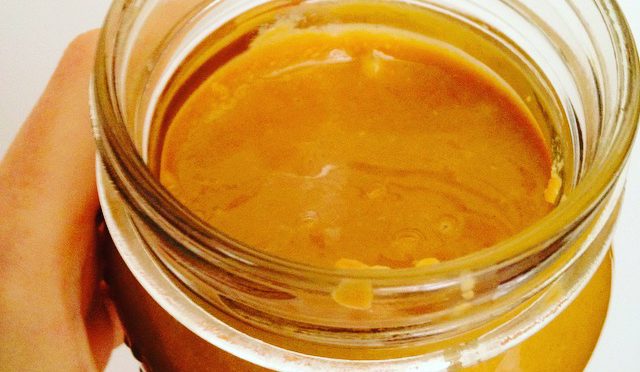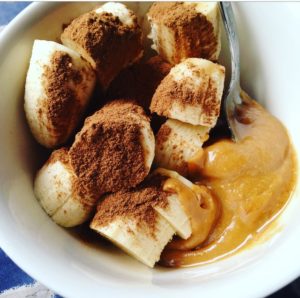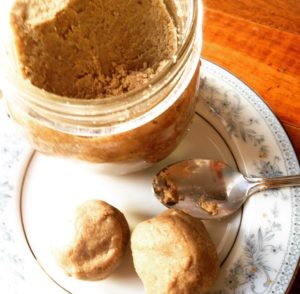The day I realised that there was more to nut butter than just peanut butter, was a good day indeed!
Don’t get me wrong, PB met my needs quite dandily, but I already ate so much of it and was in the market for some alternatives.
As it happens there are many kinds of buttery blended nuts (and seeds), each one lending it’s hand to different recipes and serving suggestions.
In year 11 (2013) my peers collected Pandora charms and something called ‘band merch’ (it took me weeks to figure out that ‘merch’ meant merchandise. Apparently I was a sheltered, uncultured 16 year-old). They spent their time on snapchat or binge-watching streamed shows from the US. Not caring much for expensive jewellery, unflattering snaps or losing myself in a vortex of cliffhangers, I decided to collect jars of nut butter and spend my time thinking up ways to use them.
Okay, so maybe I was cultured, just in a different, far more niche way.
I’ve posted various nut butter serving suggestions here.
I’ve shared my salted white chocolate macadamia butter recipe here.
I’ve actually given you the basic nut butter recipe here.
I’ve proclaimed my love for Inca Inchi seed butter here.
All this said, nut and seed butters deserve a post of their very own.
A place to call home where their thunder isn’t being stolen by alternate ramblings (read: Rach not knowing when to shut up) and quirky blog titles. So, here we are.
Nut Butter
Makes 1 large jar
- 3 cups of whatever nuts take your fancy
- 1/2 cup melted coconut oil to facilitate blending
Notes
- If you’re using macadamias, you won’t need to use any coconut oil (macadamia nuts are oily enough as is)
- Freshly roasted nuts (cooled slightly) might not require oil either. It depends on the power of your food processor or high-speed blender
- I recommend using the oil as an insurance policy unless you want to risk burning out your blending device.
- That’s not to scare you. I just don’t want angry readers blaming me because they tried to go oil-free and lost an appliance in the process.
Method
Place the oil at the bottom of the food processor container (or blender, in the case of high-speed blenders). Don’t use a regular, cheap blender to make nut butter. You’ll destroy it.
Cover with nuts, pop on the lid and turn your machine on. If you have a powerful machine, switch to high and watch the butter appear before your eyes (about 1-2 minutes).
Less powerful machines require a lower setting and some patience.
You’ll need to …
- Blend
- Stop the machine
- Scrape down the sides (with a spoon or spatula)
- Manually circulate the butter (with the same spoon or spatula)
- Repeat
Rest assured you will get butter, but it will take time. Now you can appreciate why store-bought nut butters are on the pricier side.
Be careful not to overheat your appliance.
If your nut butter isn’t coming together willingly, pause the process. Cool the machine down and repeat again in an hours time.
Store nut butter (you get to decide whether you let it stay chunky or whether you blend to a smooth puree) in a recycled glass jar in the fridge for 2 months. In colder weather, store in the pantry.
Activated and Roasted Nut Butter
Follow instructions as above, except use nuts that you’ve bought raw, soaked in water for 12 hours, drained, rinsed and roasted yourself until dry (approx 1/2 hour at 150 degrees C). You may be able to avoid using oil if the nuts are fresh from the oven, as the heat helps to release the natural oils in the nuts more readily. Can’t be bothered activating the nuts yourself? I don’t blame you. You can buy activated nuts online, or at the health or bulk food store instead.
Why Activate?
Nuts contain substances that, once ingested, can prevent you from absorbing other nutrients in your food. This is part of the plant’s “defence mechanism” (it’s an evolutionary thing).
Soaking the nuts in filtered water with a pinch of quality salt for 12-24 hours (cashews and macadamias only need 4-6 hours as they are much softer) will remove these substances.
You don’t “have to” activate, but if you plan on eating hefty spoonfuls of your nut butter on a regular basis, it might be a wise to consider, just so that you don’t compromise your nutritional status.
That said, I am convinced that those who eat a lot of nuts (like yours truly) end up developing a microbiome that hosts gut bugs that can help buffer these ‘anti-nutrient’ effects.
I say this because I can rarely be bothered activating my nuts and don’t suffer from nutritional deficiencies. It must be my healthy microbiome.
Do I need to roast my activated nuts?
Not at all my friends. You can dehydrate at a very low temperature or on the lowest setting your oven will go. This will dry the soaked nuts out and make them crispy, without imparting a roasted flavour.
You can also buy activated nuts from the health food store or online (some supermarkets even stock them these days – the times, they are a changing) and use them in the regular nut butter recipe (above).
On the rare occasions where I take the time to activate my nuts, I usually end up roasting them at 150 C degrees (a temperature low enough, so as not to disturb the heat-vulnerable oils).
Roasting takes far less time (and power) than dehydrating and, as a bonus, the nuts are warm so blending takes only a minute or so.


